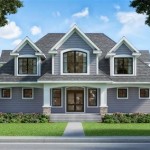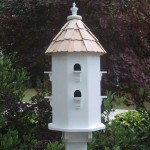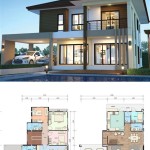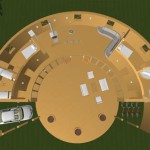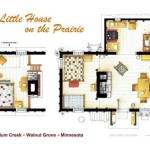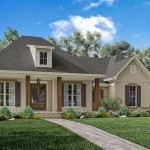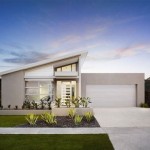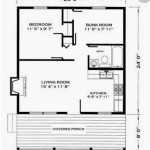```html
Craftsman Style Homes: Floor Plans for Enduring Appeal
Craftsman style homes, renowned for their enduring appeal and emphasis on handcrafted details, have captivated homeowners for over a century. A key element of their charm lies in their thoughtful floor plans, designed to foster a sense of comfort, functionality, and connection to the surrounding environment. Understanding the common characteristics and variations in Craftsman floor plans is crucial for those seeking to build or renovate a home in this distinctive style.
The Craftsman movement, which originated in the late 19th and early 20th centuries as a reaction against the mass-produced and ornate styles of the Victorian era, championed simplicity, honesty in construction, and the use of natural materials. This philosophy is directly reflected in the floor plans, which prioritize open living spaces, efficient use of space, and a strong connection between the interior and exterior of the home.
Key Characteristics of Craftsman Floor Plans
Craftsman floor plans are distinguished by several recurring characteristics. These features contribute to the overall aesthetic and functionality of the home, creating a comfortable and livable environment. Identifying these key elements is vital in recognizing and appreciating the nuances of this architectural style.
Open Concept Living Areas: One of the most prominent features is the emphasis on open concept living areas. The living room, dining room, and often the kitchen are seamlessly integrated, creating a spacious and communal area for family gatherings and entertaining. This design promotes a sense of connection and encourages interaction between occupants. While completely open, the areas are often visually defined by architectural details like exposed beams, changes in flooring, or strategically placed columns or half-walls.
Emphasis on Natural Light: Craftsman homes are designed to maximize natural light penetration. Large windows, often arranged in groupings or as bay windows, are strategically placed to illuminate the interior spaces. Transom windows, located above doors or other windows, are another common feature that allows additional light to filter through while maintaining privacy. The use of natural light contributes to a warm and inviting atmosphere, enhancing the connection to the outdoors.
Built-in Features and Storage: Practicality and functionality are paramount in Craftsman design, and this is evident in the abundance of built-in features. These features often include bookshelves, cabinets, seating nooks, and window seats. Built-ins maximize space utilization and contribute to the overall aesthetic by adding visual interest and a sense of craftsmanship. They also provide ample storage solutions, helping to maintain a clutter-free and organized living environment.
Fireplace as a Focal Point: The fireplace is often a central focal point in the living room of a Craftsman home. It serves as a gathering place and adds warmth and character to the space. Fireplaces are typically constructed from natural materials such as brick or stone and are often adorned with handcrafted details like decorative tiles or wood mantels. The presence of a fireplace reinforces the sense of comfort and domesticity that is characteristic of Craftsman style.
Integration of Indoor and Outdoor Spaces: Craftsman homes are designed to seamlessly integrate indoor and outdoor spaces, blurring the lines between the two. Porches, patios, and decks are common features that extend the living area and provide opportunities for outdoor relaxation and entertainment. These outdoor spaces are often accessible directly from the living room or dining room, creating a natural flow between the interior and exterior of the home. The connection to the outdoors is further enhanced through the use of natural materials and earthy color palettes.
Common Craftsman Floor Plan Variations
While sharing core characteristics, Craftsman floor plans exhibit significant variation depending on factors such as lot size, regional preferences, and the specific needs of the homeowner. Understanding these variations is essential for selecting a floor plan that best suits individual requirements and preferences. Examining common variations helps to illustrate the adaptability of the Craftsman style.
The Bungalow: The Bungalow is perhaps the most iconic and recognizable type of Craftsman home. Typically one or one-and-a-half stories, Bungalows feature a low-pitched roof, wide overhanging eaves, and a prominent front porch supported by tapered columns. The floor plan is generally compact and efficient, with the main living areas located on the first floor and bedrooms often situated on the upper level or in the rear of the house. Bungalows are well-suited for smaller lots and are often characterized by their cozy and intimate atmosphere.
The Prairie Style Craftsman: Inspired by the Prairie School of architecture, this variation emphasizes horizontal lines and a strong connection to the landscape. Prairie Style Craftsman homes typically feature a low-pitched roof with wide eaves, horizontal bands of windows, and a sprawling floor plan. The interior spaces are often open and flowing, with an emphasis on natural light and ventilation. These homes often incorporate elements of Japanese design, such as shoji screens and tatami mats, further enhancing the connection to nature.
The Arts & Crafts Cottage: This variation focuses on simplicity and functionality, with an emphasis on handcrafted details and natural materials. Arts & Crafts Cottages are typically smaller than Bungalows, with a more compact and intimate floor plan. The exterior is often clad in wood shingles or clapboard and features a steeply pitched roof and a prominent front porch. The interior spaces are typically cozy and comfortable, with an emphasis on natural light and warmth. Built-in features and handcrafted details are common throughout the home.
Two-Story Craftsman Homes: While Craftsman architecture is often associated with single-story homes, two-story variations are also common. These homes typically feature a similar aesthetic to Bungalows, with a low-pitched roof, wide overhanging eaves, and a prominent front porch. The floor plan is generally more spacious, with bedrooms located on the upper level and living areas on the ground floor. Two-story Craftsman homes are well-suited for larger families or those who require more living space.
Considerations for Choosing a Craftsman Floor Plan
When selecting a Craftsman floor plan, several key considerations should be taken into account to ensure that the chosen design meets individual needs and lifestyle. Careful evaluation of these factors will contribute to long-term satisfaction and comfort within the home.
Lifestyle and Family Needs: The floor plan should be carefully evaluated to ensure that it accommodates the specific needs and lifestyle of the occupants. Consider the number of bedrooms and bathrooms required, the size of the living areas, and the presence of any specialized spaces such as a home office or hobby room. Those who frequently entertain may prioritize a large, open-concept living area, while those who value privacy may prefer a more compartmentalized floor plan.
Lot Size and Orientation: The size and orientation of the lot will also influence the choice of floor plan. A narrow lot may require a vertical floor plan, while a larger lot may accommodate a more sprawling design. The orientation of the lot should be considered to maximize natural light penetration and optimize views. The placement of windows and outdoor spaces should be carefully planned to take advantage of sunlight and prevailing breezes.
Local Building Codes and Regulations: It is essential to ensure that the chosen floor plan complies with all local building codes and regulations. These regulations may dictate setback requirements, height restrictions, and other design considerations. Consulting with a qualified architect or builder is recommended to ensure that the floor plan meets all applicable requirements.
Budget and Construction Costs: The budget for the project will also influence the choice of floor plan. More complex designs with intricate details and high-end finishes will typically cost more to build. Consider the cost of materials, labor, and other expenses when evaluating different floor plan options. It is important to establish a realistic budget and stick to it throughout the design and construction process. Simplifying the design or opting for more affordable materials can help to reduce costs without sacrificing the overall aesthetic of the home.
Future Needs and Flexibility: It's valuable to think about potential future needs when choosing a floor plan. Will the family grow? Are there plans for elderly parents to move in? A flexible floor plan that can be easily adapted to accommodate changing needs is often a wise investment. Features like unfinished basements or attics can be finished later to create additional living space. Consider the potential for adding an addition or making other modifications to the floor plan in the future. A well-designed floor plan should be adaptable and accommodating to meet the evolving needs of the homeowner.
```
Bungalow Floor Plans Style Homes Arts And Crafts Bungalows Craftsman House

Traditional Style With 3 Bed 2 Bath Car Garage House Plans Dream Craftsman

1922 Craftsman Style Bunglow House Plan No L 114 E W Stillwell Co Bungalow Floor Plans

Plan No R 856 C 1918 Cottage House By A E Stillwell Vintage Bungalows Plans Transitio Bungalow Floor

1926 Standard Homes Company Plan The Cliftonone Htm Craftsman Bungalow House Plans Style Vintage

1920 National Plan Service Craftsman House Plans Vintage Design Pictures

Stylish Home With Great Outdoor Connection Craftsman Style House Plans Plan

1923 Craftsman Style Bungalow The Irving By Standard Homes Company House Plans Of 1920s With Pictures Floor

The Gladstone 1923 Standard Homes Company House Plans Of 1920s Craftsman S Style Bungalow Vintage

Pin By Sun N Wi On Old Homes Turn Of The Century Craftsman House Plans Cottage

